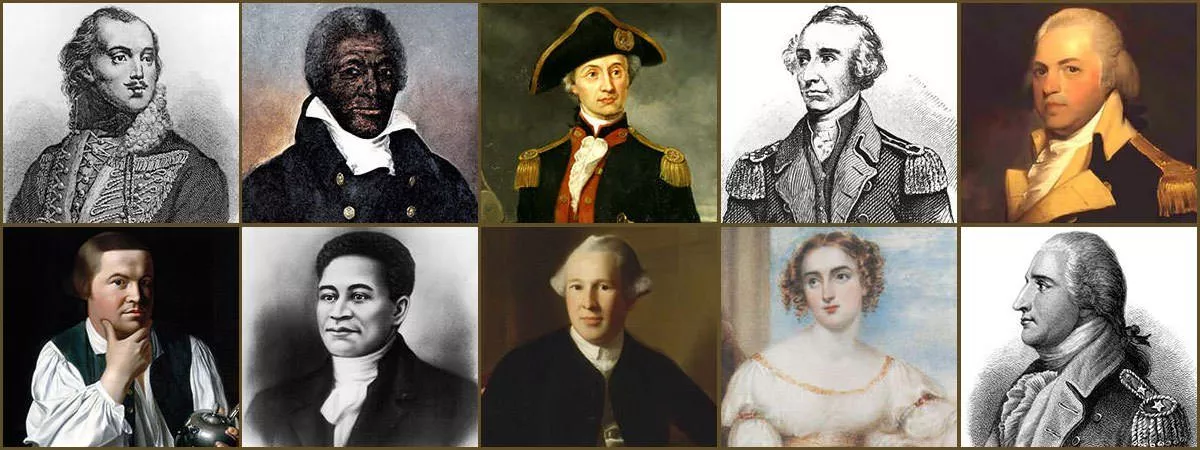Lasting from 1765 to 1783, American Revolution was a revolt in the Thirteen British Colonies in North America which saw them overthrow British rule. There are numerous interesting figures associated with the American Revolution. These include leaders of the Revolution like Joseph Warren and Paul Revere; and commanders of the Revolutionary War like Henry “Light-Horse Harry” Lee and Francis “Swamp Fox” Marion. There were spies working from either side and among them James Armistead Lafayette and Ann Bates played a critical role for their nations. One of the most famous and hated figure of the Revolution was Benedict Arnold. He contributed to the American cause in the early part of the war but then switched sides to fight for the British. His name has become synonymous with traitor in America. Then, there were foreigners who had a major impact on the event like Casimir Pulaski and John Paul Jones. Here are 10 interesting people from the American Revolution and their stories.
#1 Crispus Attucks
| Lifespan: | 1723 – March 5, 1770 |
| Nationality: | American |
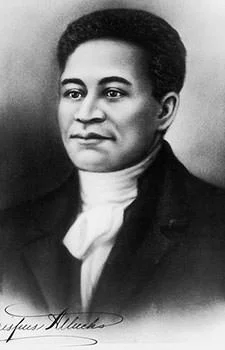
In the fall of 1768, three years after the Revolution began, British soldiers were sent to Boston in an attempt to control growing colonial unrest. The presence of these troops further increased the already rising tensions. On March 5, 1770, after an altercation with an apprentice of a wig-maker, a British Private Hugh White was surrounded by Bostonians. Seven British soldiers with bayonets then moved through the crowd to rescue White. They became surrounded by a crowd, who threw snowballs, oyster shells and debris at them. In the confusion, the British soldiers fired at the crowd even though they weren’t ordered to do so. This resulted in 11 people being hit; three died on the spot while two were mortally wounded. This event became known as the Boston Massacre. Crispus Attucks was a manual laborer of African and Native American descent, who spent a considerable amount of time in Boston. Attucks was one of the five men killed in the Boston Massacre and he is widely regarded as the first person killed in the incident thus making him the first American killed in the American Revolution. The Boston Massacre was one of the leading causes of the American Revolution as it decisively turned colonial sentiment against Britain. During the anti-slavery movement in mid-19th century, Attucks became a key figure for supporters of abolition of slavery who lauded him for playing a pivotal role in the American Revolution. Since then, Attucks has remained an iconic figure of the Revolution. He features on a monument on Boston Common and there are numerous references to him in popular culture.
#2 Paul Revere
| Lifespan: | December 21, 1734 – May 10, 1818 |
| Nationality: | American |
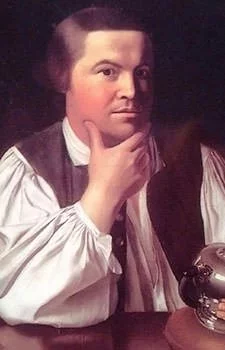
When the American Revolution broke out, Paul Revere was a prosperous and prominent silversmith in Boston. In 1765, the Stamp Act was passed by the British government. In response to the Act, the secret organization Sons of Liberty was formed which had the motto, “No taxation without representation”, that is, not being taxed by a British Parliament to which they elected no representatives. Paul Revere was a member of the Sons of Liberty; and he spread the cause of the Revolution through engravings and other artifacts like his famous depiction of the March 1770 Boston Massacre. Revere was also one of the leading figures in organizing the December 1773 Boston Tea Party, in which colonists dumped tea into the Boston harbor in retaliation to the Tea Act. However, the most famous contribution of Paul Revere was his “Midnight Ride”. On the night of April 18, 1775, Paul Revere, along with William Dawes, rode to Lexington with the news that British troops planned to arrest revolutionary leaders Samuel Adams and John Hancock. Moreover, they planned to destroy military supplies stored in the nearby town of Concord. Riding through present-day Somerville, Medford and Arlington, Revere warned patriots along his route, many of whom set out on horseback to deliver warnings of their own. Thus Revere played a key role in the Battles of Lexington and Concord being a success for the colonists with only a few weapons being seized by the British and their suffering more casualties. The ride of Revere has been immortalized by an 1861 poem by Henry Wadsworth Longfellow.
#3 Joseph Warren
| Lifespan: | June 11, 1741 – June 17, 1775 |
| Nationality: | American |
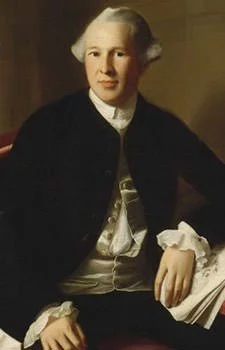
Joseph Warren was a physician in Boston who became part of the Sons of Liberty in 1765. In 1775, he was appointed President of the Massachusetts Provincial Congress, the highest position in the revolutionary government. When the British planned to march to Lexington, it was Warren who sent Paul Revere and William Dawes to warn the revolutionary leaders. During the Battle of Lexington and Concord, the first military engagement of the Revolutionary War, Warren was nearly killed. On June 14, 1775, he was commissioned as a major general. He took part in the Battle of Bunker Hill, which was fought on June 17, 1775. However, despite being asked to serve as a commander, he asked where the heaviest fighting would be and fought as a private. He fought until out of ammunition and remained until the British made their third and final assault on the hill to give time for the militia to escape. Joseph Warren was killed in the Battle of Bunker Hill and when the British commander learned of his death, he reportedly said Warren’s death was equal to the death of 500 men. Through his bravery, Warren inspired others to take up the cause of the Revolution and his death was viewed by many Americans as an act of martyrdom. It was been depicted in the painting The Death of General Warren at the Battle of Bunker Hill by John Trumbull. There are four statues of Warren on public display; three in Boston; and one in Warren, Pennsylvania, a city, borough, and county all named after the general.
#4 Casimir Pulaski
| Lifespan: | March 6, 1745 – October 11, 1779 |
| Nationality: | Polish |
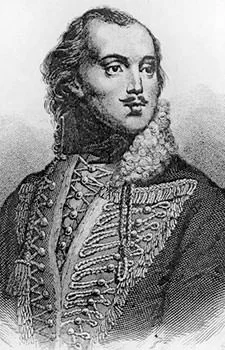
Casimir Pulaski was one of the leading military commanders of the Bar Confederation, an association which fought for the independence of the Polish–Lithuanian Commonwealth against Russian domination. When the revolt failed, he was driven into exile. It was Benjamin Franklin who recommended General George Washington to accept Pulaski as a volunteer in the Continental Army cavalry and said that Pulaski “was renowned throughout Europe for the courage and bravery he displayed in defense of his country’s freedom.” Pulaski arrived in America on July 23, 1777 and he met Washington on August 20. He first saw action at the Battle of Brandywine on September 11. During the battle he averted a disastrous defeat of the Continental Army cavalry and defended Washington’s rear assisting in his escape. He thus gained fame for saving the life of Washington. On September 15, he was made a brigadier general in the Continental Army cavalry. Pulaski immediately began work on reforming the cavalry. He even created the Pulaski Cavalry Legion, which saw action at the Little Egg Harbor massacre, Siege of Savannah and Siege of Charleston. Casimir Pulaski was fatally wounded while leading a cavalry charge against British forces during the Battle of Savannah. Along with Hungarian cavalry officer Michael Kovats, Pulaski is widely regarded as the “Founding Father of the US Cavalry.” Moreover, he is remembered as a hero who fought for independence in both Poland and the United States. Pulaski has been honored numerous times in the United States for his contribution to the Revolution. Among other things, he is one of only eight people to be awarded honorary American citizenship.
#5 John Paul Jones
| Lifespan: | July 6, 1747 – July 18, 1792 |
| Nationality: | Scottish |

Born in Scotland, John Paul served as commander of several British merchant ships. However, he was forced to flee to North America after he killed one of his crew members, which he claimed was in self-defense. When the Revolutionary War began, Jones joined the newly founded Continental Navy as lieutenant of the frigate Alfred. It was aboard Alfred, on December 3, 1775, that he became the first to hoist the US flag over an American warship. He was then given command of the sloop Providence. In 1776, as commander of Providence, Jones performed several important duties including transport of troops and movement of supplies. Moreover, he captured sixteen British ships during one six-week cruise. This led to him being given permanent promotion to captain. In August 1779, Jones took command of the Bonhomme Richard and sailed around the British Isles. In September, he intercepted British ships Serapis and Countess of Scarborough. What followed was one of the most famous naval engagements in American history. After inflicting considerable damage to Bonhomme Richard, Richard Pearson, the captain of the Serapis, asked Jones whether he was willing to surrender. To this Jones famously replied: “I have not yet begun to fight!” After a duel which lasted three and a half hours, Jones forced a surrender of Serapis and Countess of Scarborough. The battered Bonhomme Richard sank the following day and the Americans transferred to Serapis. John Paul Jones was the first well known naval commander of the United States and he is often called the “Father of the American Navy”. After the war, he joined the Imperial Russian Navy but his tenure there was unremarkable.
#6 Benedict Arnold
| Lifespan: | January 14, 1741 – June 14, 1801 |
| Nationality: | American |
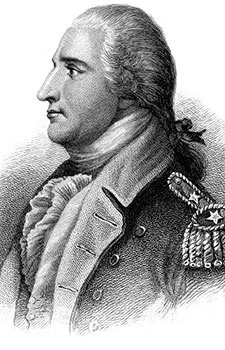
Benedict Arnold began the Revolutionary War as a captain in the Connecticut Colony militia. Along with Ethan Allen, he led a small force to capture Fort Ticonderoga on May 10, 1775. Arnold led an unsuccessful assault on Quebec City in late 1775. He participated at the Battle of Valcour Island in 1776. Though the patriots lost the battle, Arnold delayed the British long enough to save the American cause. The most famous contribution of Arnold came at the Battles of Saratoga. During the conflict, he took command of a group of American soldiers to lead an assault that threw the enemy into disarray and contributed greatly to American victory. Success at the Battles of Saratoga is considered a turning point in the war as it contributed greatly in the formation of the formal Franco-American alliance. Post Saratoga, Arnold served as the governor of Philadelphia. During this time he socialized with families of Loyalist sympathies. Despite him being a war hero, Arnold felt he was not adequately recognized for his contributions with others benefiting from his accomplishments. By July 1779, he had become a traitor and by the end of the year, he had started secretly negotiating with the British to surrender the American fort at West Point, New York. However, on September 23, his British contact, Major John André, was captured and the plot was exposed. Arnold was able to escape on a British ship and evade capture. Arnold then fought from the British side against America at Richmond and New London. His name thus became synonymous with the word “traitor” in America.
#7 Ann Bates
| Lifespan: | 1748 – 1801 |
| Nationality: | American |
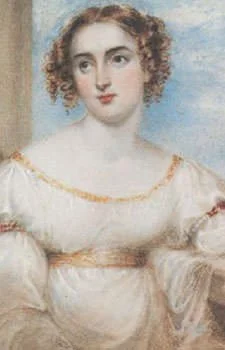
Born in Pennsylvania, Ann Bates was a schoolteacher in Philadelphia who married Joseph Bates, a soldier in the British army. She was one of the many loyalists who left Philadelphia in 1778. It was at this time that Ann enlisted under Henry Clinton, the British Commander-in-Chief. Ann became a British spy who reported to Major Duncan Drummond. In 1778, she left for her first mission. She traveled to the camp of General George Washington in White Plains, New York under the name “Mrs. Barnes”. While on the camp, Bates listened in on many conversations and counted artillery pieces. On reaching New York City, she relayed the vast information she had collected to Drummond. She made three trips to Washington’s camp to collect intel. Among other things, she provided valuable intelligence about the planning of the Rhode Island Campaign. During her final mission, Bates was spotted by a British soldier who had defected and she immediately left the American camp. She was discovered and questioned at an American headquarter. However, she managed to remain calm and was released. Rattled by these occurrences, Bates stopped her activities as a spy. On March 6, 1781, Ann Bates and her husband sailed for England. After being divorced, in 1785, she wrote a petition for pension, which she was able to secure due to the papers of Major Drummond and her sharp memory. Ann Bates was known for her awareness, intelligence and ability to remain calm under pressure. She was one of the most important British spies in the American Revolution.
#8 James Armistead Lafayette
| Lifespan: | 1748 – 1830 |
| Nationality: | American |
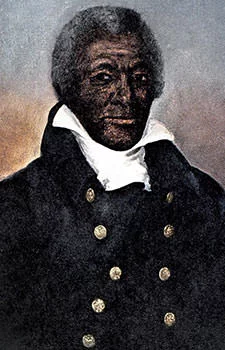
James Armistead was an African American slave owned by William Armistead of Virginia. James got his master’s permission to assist the Continental Army and he served under French commander Marquis de Lafayette. Lafayette used him as a spy and he began his service by transporting intelligence reports across enemy lines. In 1781, Armistead entered the camp of the traitor Benedict Arnold and posed as a runaway slave who was loyal to the British. He quickly gained the confidence of Arnold, who used him to guide British troops through local roads. James then went to the camp of British General Charles Cornwallis, who employed him as a British spy. Acting as a double agent, James began providing false information to the British supplied by Lafayette while disclosing very accurate and detailed accounts to the Americans. The most valuable intelligence report provided by James was about the move of Cornwallis from Portsmouth to Yorktown; and the arrival of 10,000 British troops at Yorktown. This information was instrumental in helping the Continental Army defeat the British at the decisive Battle of Yorktown, the last major battle of the Revolutionary War. Despite risking his life for his nation, James Armistead was sent back to his master after the war. However, in 1784, Lafayette provided a testimonial confirming his key service as a spy. This led to James Armistead becoming a free man in 1787 and, as a gesture of gratitude to the Frenchman, he changed his name to James Armistead Lafayette.
#9 Francis Marion
| Lifespan: | 1732 – February 27, 1795 |
| Nationality: | American |
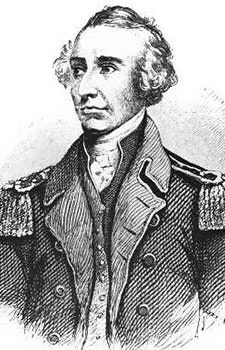
Francis Marion took part in the French and Indian War from 1757. When the American Revolutionary War broke out, he was commissioned as a captain in the 2nd South Carolina Regiment. He helped defend Charleston in the 1776 British Siege of Charleston. For his part in the fighting, Marion was promoted to lieutenant colonel in the Continental Army. In March 1780, he broke an ankle in an accident and had to leave Charleston. This worked in his favor as the city fell to the British on May 12, 1780. Marion organized a small unit, which at first consisted of between 20 and 70 men. This unit became the only resistance to the British in South Carolina. Marion employed guerrilla warfare tactics to harass the British terrorizing his enemies through quick surprise attacks and equally sudden withdrawal to the swamps in the region. His men scored their first major success when they ambushed a British camp and liberated 150 American prisoners at Great Savannah. As the British moved to occupy South Carolina, Marion relentlessly attacked them. In September 1780, Marion attacked and defeated a contingent of Loyalist troops in the Battle of Black Mingo. Annoyed by Marion and his tactics, British General Cornwallis sent Banastre Tarleton to destroy Marion’s unit. After unsuccessfully pursuing Marion’s troops for 7 hours over 26 miles, Tarleton gave up stating: “As for this damned old fox, the Devil himself could not catch him.” This led to Francis Marion becoming known as “The Swamp Fox”. Marion was promoted to brigadier general and he took part in several successful campaigns including the Siege of Fort Watson, Siege of Fort Motte and Battle of Eutaw Springs. Francis Marion is considered one of the fathers of modern guerrilla warfare and he remains hugely popular in the United States.
#10 Henry Lee III
| Lifespan: | January 29, 1756 – March 25, 1818 |
| Nationality: | American |
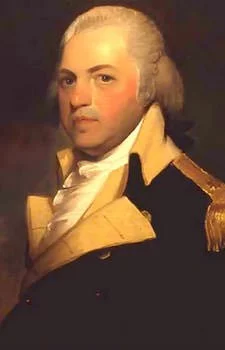
Henry Lee, more commonly known as “Light-Horse Harry” Lee, served as a cavalry officer in the Continental Army during the Revolutionary War. He started as a captain and was promoted to major in 1778. Lee’s Legion, which served primarily in the Southern Theater of the War, became known for efficiency, bravery on the battlefield and ruthlessness. It was during his time as commander of this legion that Henry Lee became known as “Light-Horse Harry” for his horsemanship. His highly mobile light cavalry group provided service not only in major battles but also in surveillance; and in disrupting the enemy movement through surprise raids. On September 22, 1779, Lee was provided with a gold medal for conducting a successful nighttime raid at the Battle of Paulus Hook and taking 158 British prisoners. Soon Lee was promoted to lieutenant colonel. In 1781, along with General Francis Marion and General Andrew Pickens, Henry Lee led the American forces in the capture of numerous British outposts in South Carolina and Georgia including Fort Watson, Fort Motte, Fort Granby, Fort Galphin, Fort Grierson and Fort Cornwallis. Lee’s Legion also served at the Battle of Guilford Court House, the Siege of Ninety-Six and the Battle of Eutaw Springs. After the war, Light-Horse Harry Lee had a successful political career. Among other things, he was Governor of Virginia from 1791 to 1794; and served in the US House of Representatives from 1799 to 1801. Lee’s son Robert E. Lee went on to become famous as the commander of the Confederate States Army during the American Civil War.

